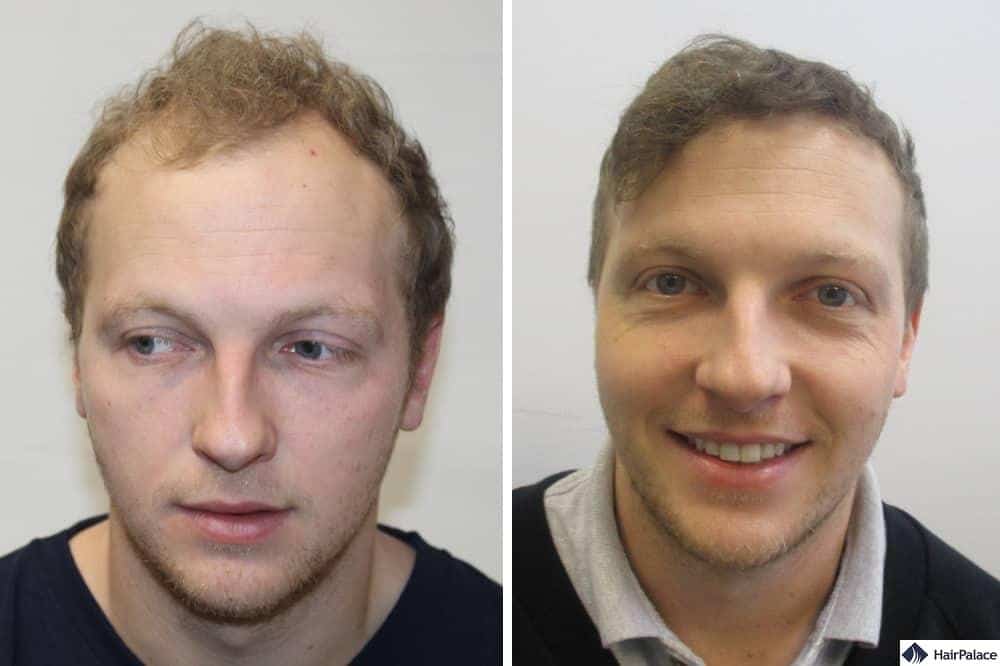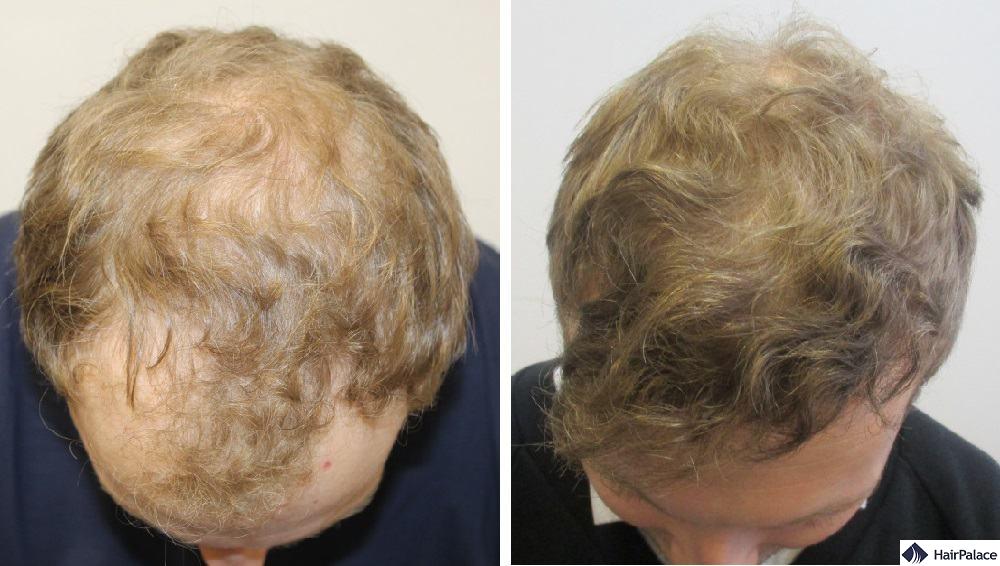6000 Hairs for an Excellent Result – Jon’s Hair Transplant
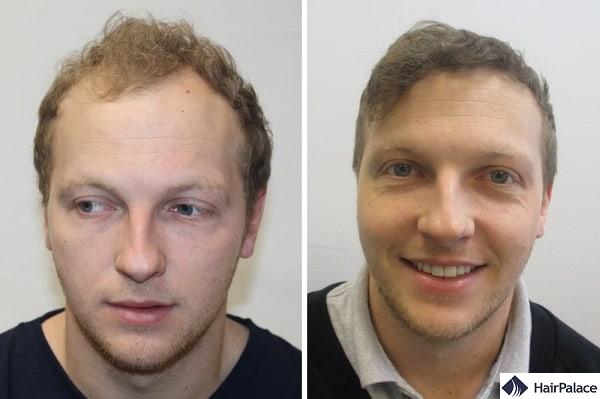
- Jon’s FUE2 hair transplant
- The post-op evolution
- The donor area
- The final result of the hair transplant
Jon got in touch with our clinic on the 18th of October 2018.
Ha had been losing his hair for two years, leaving his front thinned out with a receded hairline.
Jon explained to our team that besides increasing the density, he would also like to bring the hairline a bit lower. The doctor marked roughly where his hairline would sit:
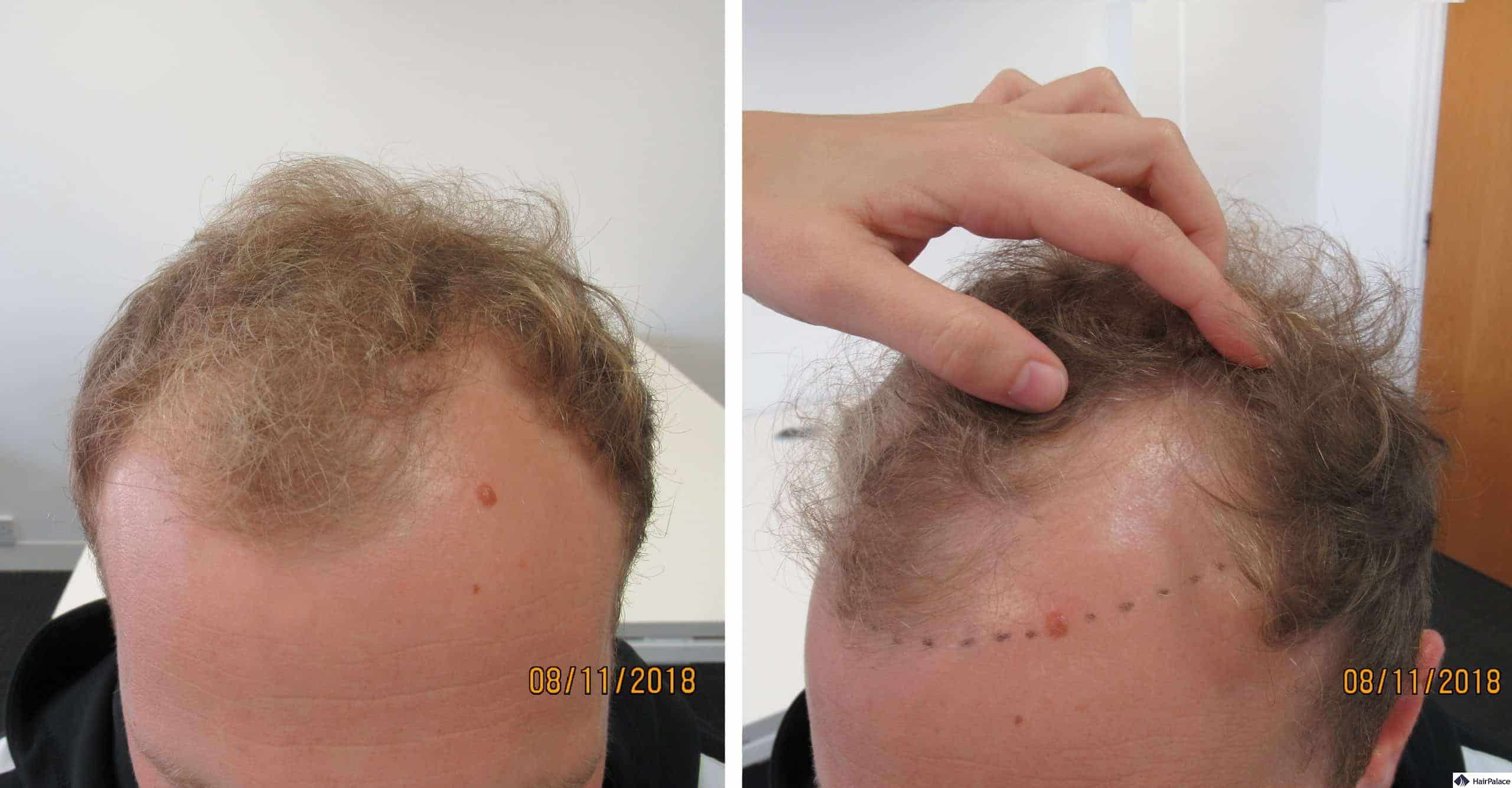
The attending doctor proposed him our 6000 hairs package to achieve the best results.
Though the examinations are quick (the consultation takes around 15-20 minutes), we inspect a number of aspects unique to each patient.
When determining the number of hairs needed, we first assess the size and the density of the area we will treat.
Then we also consider the density on other areas of the scalp to see how big of a density we should build for a natural look.
We also examine the capacity of the donor area and the overall condition and quality of the scalp.
If you would like us to check your current condition and provide you with a detailed treatment plan, request an examination below:
Jon’s FUE2 hair transplant
Jon had his hair transplant booked for the 30-31st of January 2019.
He arrived in Budapest two days prior, as he opted for having his blood tests done with us.
Before the procedure, we need to check a couple of blood test results.
The necessary tests can be arranged in Budapest. But, as our partner clinic needs a day to have the results, patients choosing this option must arrive two days before the hair transplant.
Optionally, patients can arrange the required tests with their GP, or at a local hospital and send us the result.
The day after Jon’s blood test, we could start his procedure.
During his 2-day hair transplant session, we have transplanted 6024 hairs:
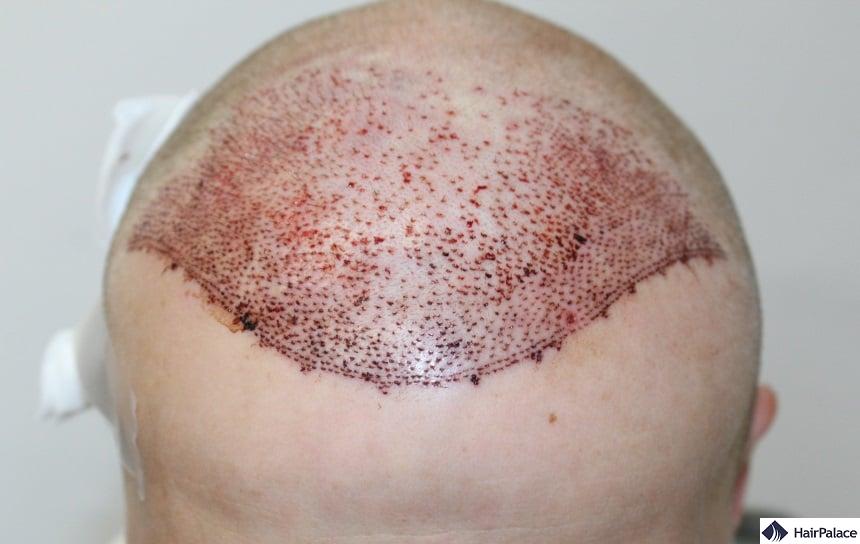
We can see in the photo above that the doctor implanted the hairs with a bigger density at the temples and placed new hairs more sporadically in the mid-front where Jon had more hairs to begin with.
A few hours after the surgery, patients have to remove the bandage from the donor area, and they also have to start using the sterile saline solution.
The day after the surgery is finished, patients can safely travel, so they can start the recovery period in the comfort of their home.
The post-op evolution
After the surgery, it takes months for the result to fully develop.
Patients have to follow strict care in the first 3 weeks to ensure that the healing of the scalp goes uninterrupted and the new hairs can properly anchor.
We follow the process carefully and have check-ups at each milestone of the post-op period.
1 week after the surgery
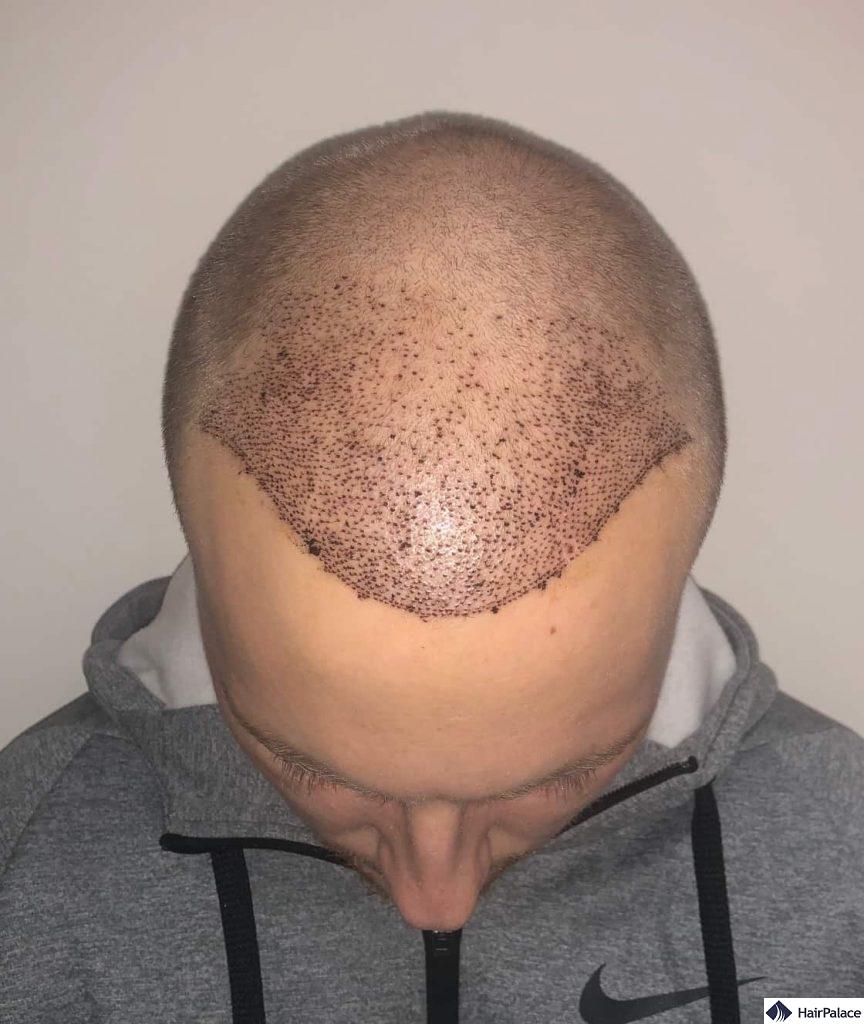
During the first 7 days, only the sterile saline solution can touch the implanted area. So by the 1-week mark, patients can expect to see scabs and redness.
2 weeks after the surgery
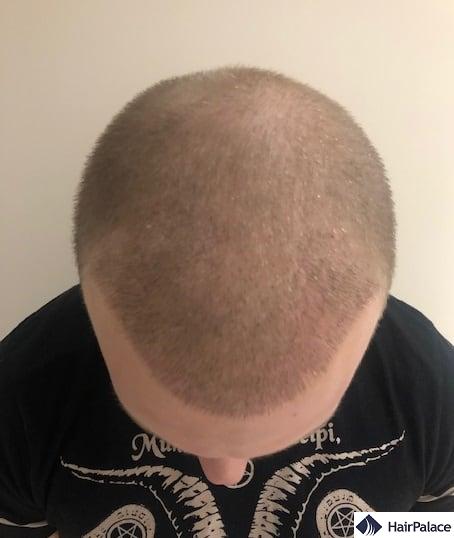
During the second week, patients have to soak and massage through their scalp every day. Through this process, the scabs come off without pulling the hairs out.
3 weeks after the surgery
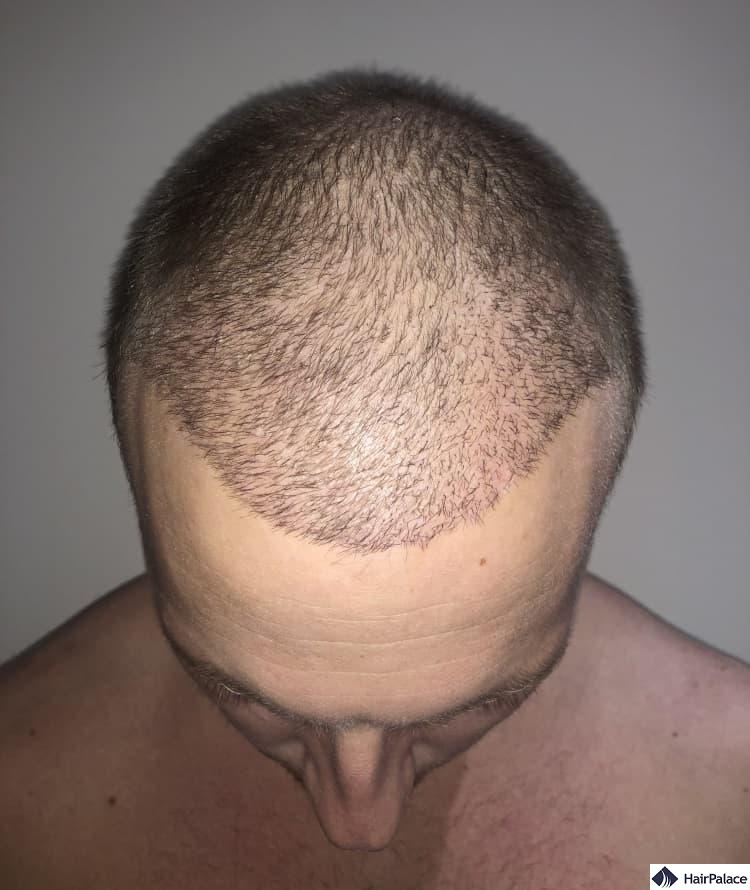
As we can see on Jon’s photo, the scabs must be gone, and the hairs should be in place. Though some might still see some redness at this point, in Jon’s case, the signs of the surgery have already disappeared.
3 months after the surgery
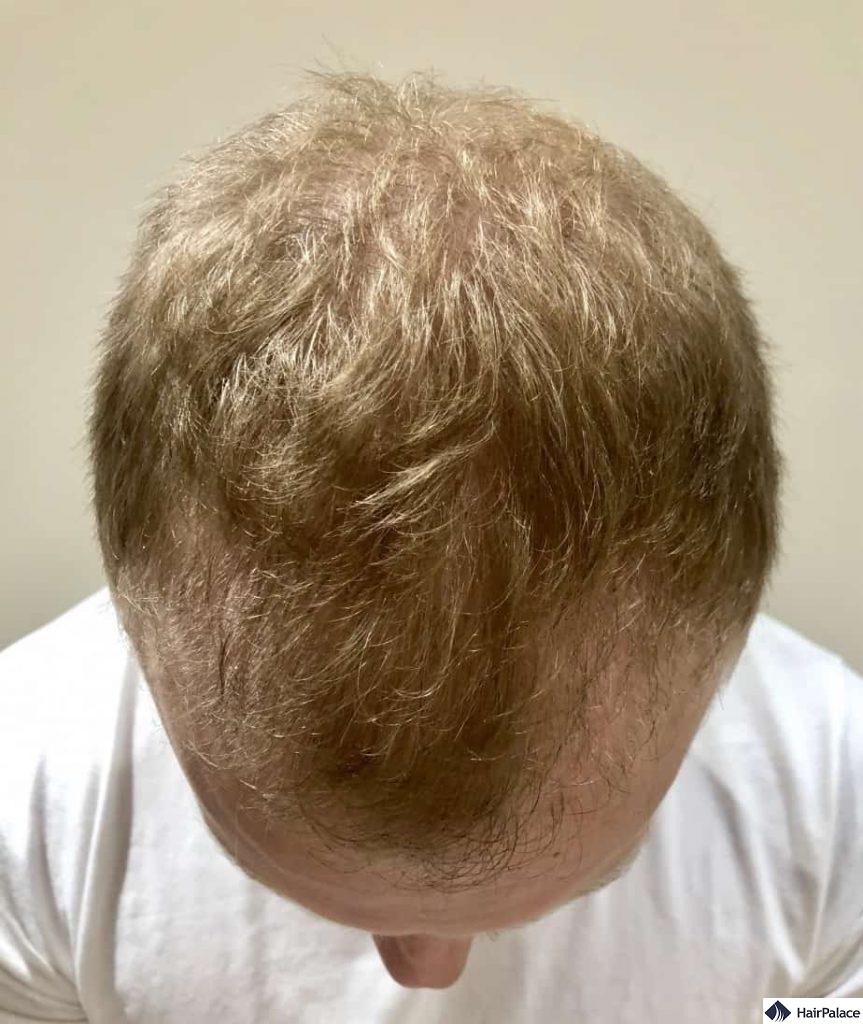
Between the 3-weeks’ and 3-months’ check-ups, the transplanted hairs fall out. The roots stay in place and start to grow new hairs shortly after. In Jon’s case, we could already detect some regrowth at his follow-up.
6 months after the surgery
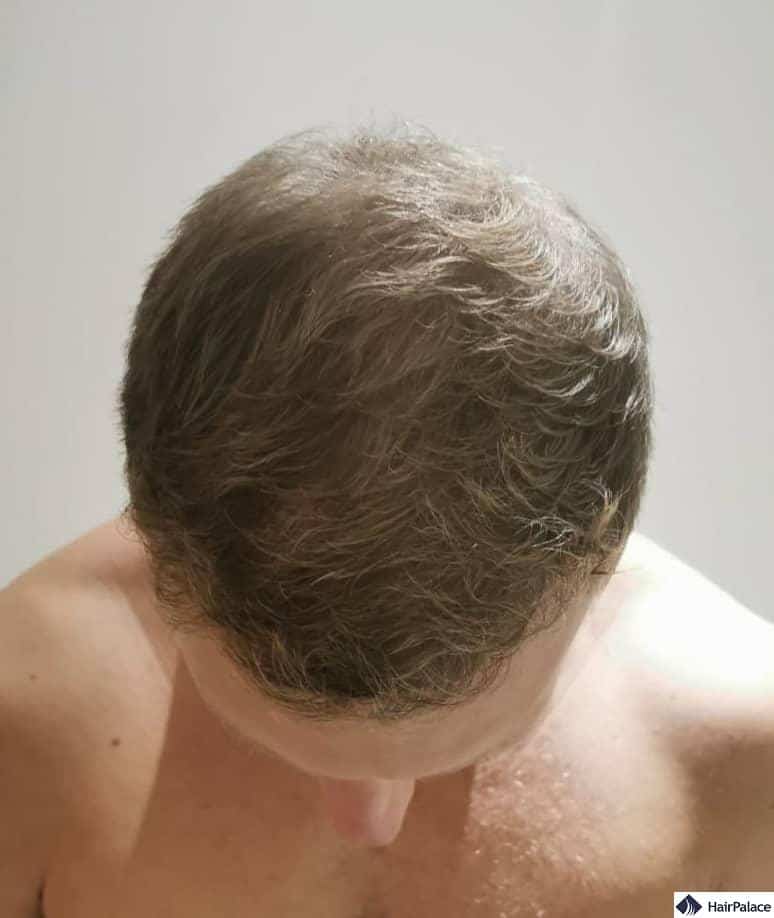
The speed of the progress can vary, but by the 6 months’ check-up, most patients already see the change. Though the result was only partial, it provided great coverage already in Jon’s case.
The donor area
After the hair transplant surgery, the donor area will not need as much attention and care as the recipient area.
Feeling soreness is rare, but it can be easily managed with regular painkillers if it occurs in the first couple of days after the surgery.
Patients more often report a bit of numbness or itching. In the vast majority of the cases, these arise as the scalp heals and tightens a bit, but it is always best to inform our surgeons about such concerns.
1 week after the surgery
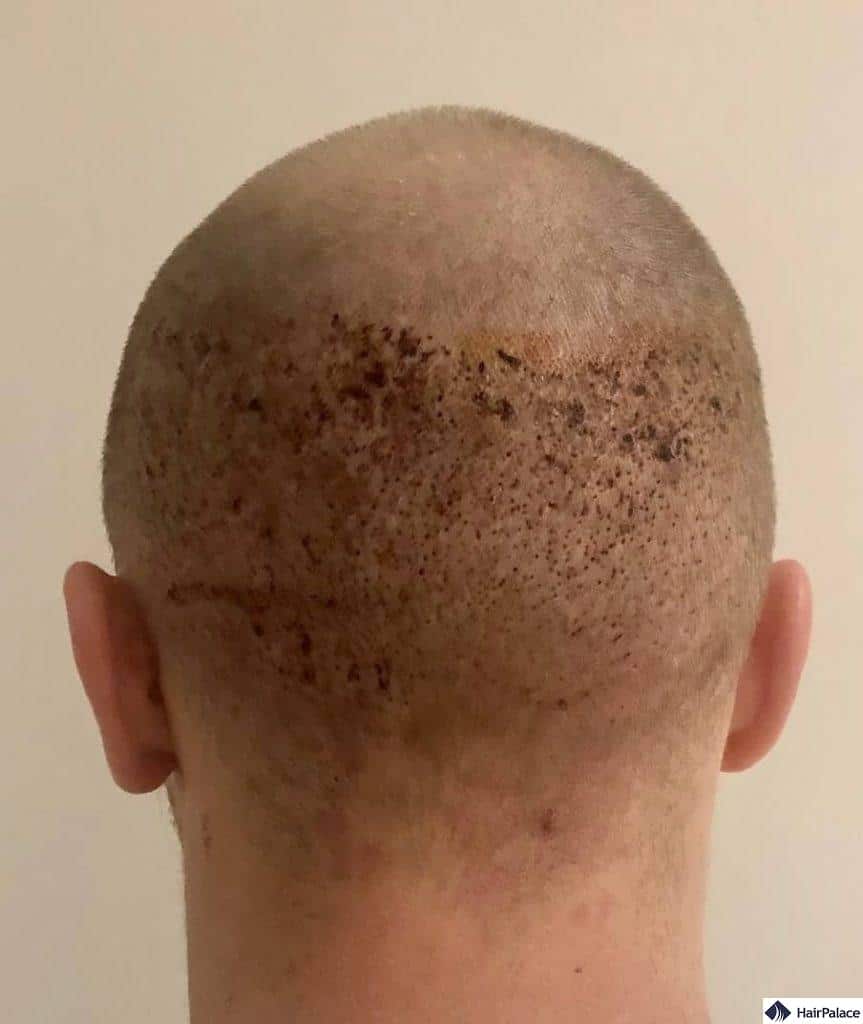
After the extractions scabs will form on the donor area too. It is best to leave the tiny wounds close properly under the scabs, so patients should not wash the donor area either during the first week.
As there are no hairs to anchor, it is perfectly fine if the area touches the pillow, so it is okay to sleep on one’s back or sides.
2 and 3 weeks after the hair transplant
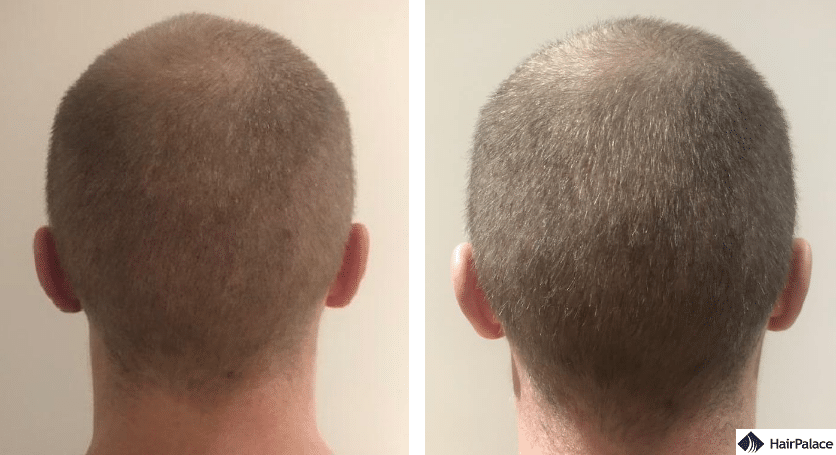
Just like with the recipient area, patients have to start gently soaking and massaging the scabs off.
Typically, this task is easier to perform in this area, as patients do not have to be especially careful of freshly transplanted hairs. All scabs must disappear by the end of the 3rd post-op week.
3 and 6 months after the procedure
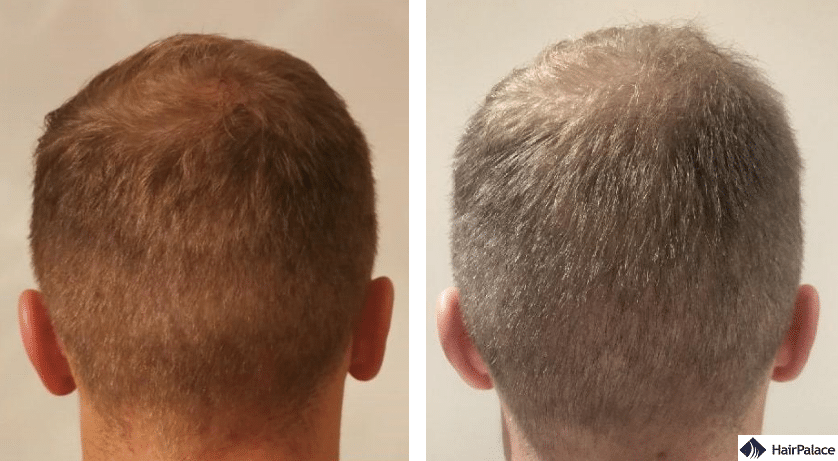
After the scabs are gone, patients do not have to pay much attention to the donor area.
As the hairs are extracted sporadically from the whole expanse of the donor area, there will be no thinner patches or spots.
And once the rest of the hair grows a bit, there will be no visible signs of the procedure on the donor area.
The final result of the hair transplant
Patients can expect to see the full result of the hair transplant 12-18 months after the procedure.
We have – usually the last – check-up 12 months after the surgery. For this occasion, Jon returned to our clinic.
During the examination, we found everything in order – the transplanted hairs grew back in excellent number.
Take a look at Jon’s transformation:
